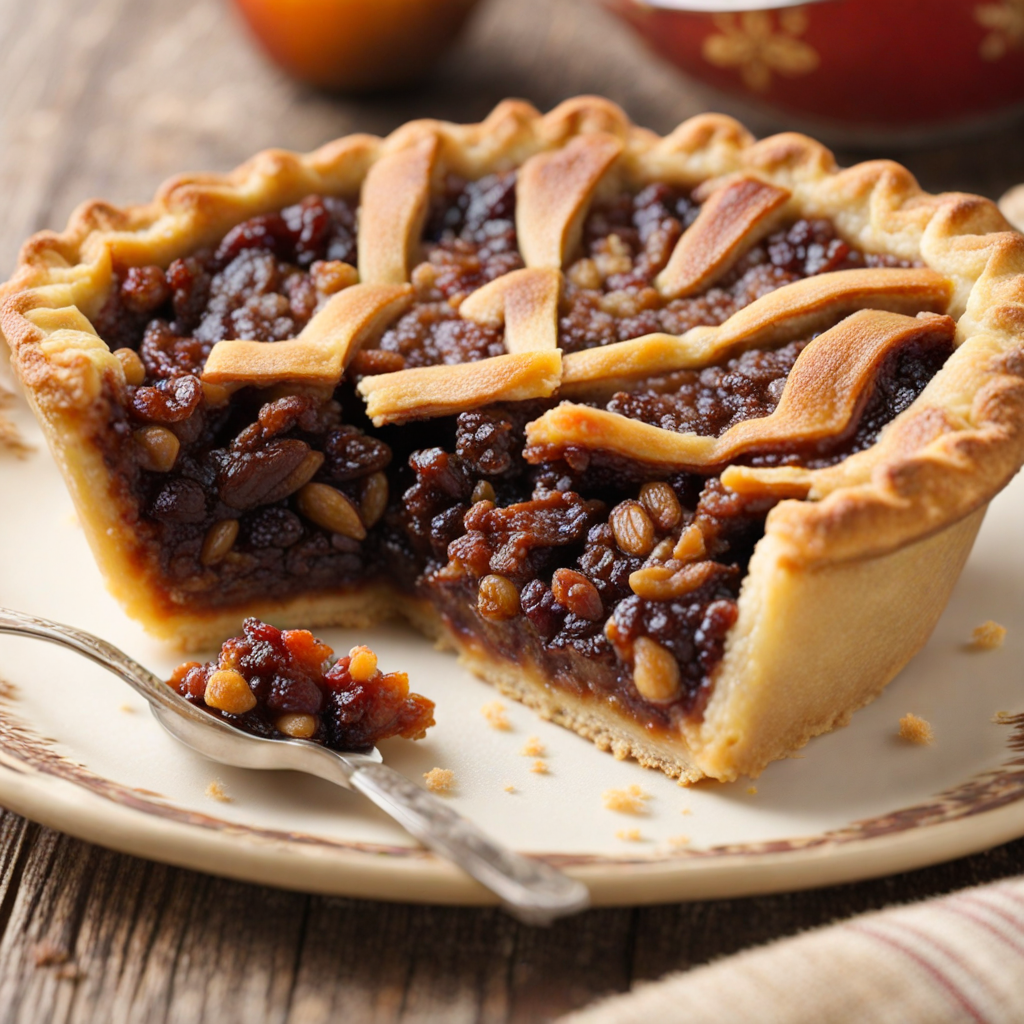Bakewell Tart
Bakewell Tart is a delightful pastry hailing from the United Kingdom, particularly associated with the picturesque town of Bakewell in Derbyshire. This tart features a crisp, buttery shortcrust pastry that forms the base, providing a satisfying crunch with each bite. The tart is typically filled with a layer of sweet raspberry or strawberry jam, which adds a fruity tang that beautifully complements the other flavors. The jam is often spread generously, ensuring that every mouthful bursts with delightful sweetness that is both comforting and nostalgic. On top of the jam layer lies a rich almond sponge known as frangipane, made from ground almonds, eggs, and sugar. This moist and subtly flavored sponge creates a perfect contrast to the tartness of the jam. The frangipane is often enhanced with a touch of almond extract, giving it an aromatic quality that elevates the overall experience. A scattering of flaked almonds on top not only adds texture but also a nutty flavor that rounds out the tart beautifully. Bakewell Tart is often finished with a light glaze of icing sugar and sometimes a cherry placed in the center, making it as visually appealing as it is delicious. The combination of the buttery pastry, sweet jam, and rich frangipane creates a symphony of flavors that is both indulgent and satisfying. Enjoying a slice of Bakewell Tart with a cup of tea is a cherished tradition in the UK, making it a perfect treat for those looking to discover a sweet slice of British culinary heritage.
How It Became This Dish
The Bakewell Tart: A Delicious Slice of History The Bakewell Tart, a quintessentially British pastry, holds a special place in the culinary landscape of the United Kingdom. Its delightful combination of shortcrust pastry, almond-flavored frangipane, jam, and a topping of flaked almonds or icing, gives it both a striking appearance and a rich flavor profile that has captivated taste buds for generations. Yet, the history of this tart is as layered and complex as its ingredients. #### Origins The origins of the Bakewell Tart can be traced back to the town of Bakewell in Derbyshire, England. The story goes that the tart was born in the 19th century, although the area has a much older culinary tradition, with records of local bakeries dating back several centuries. The most popular tale attributes the creation of the Bakewell Tart to a simple misunderstanding in a local inn. In the 1860s, a local innkeeper was said to have instructed her cook to prepare a jam tart. However, in a moment of miscommunication, the cook mistakenly mixed the ingredients for the pastry and the jam with an almond-flavored filling instead. The outcome was a delightful concoction that quickly gained popularity. The tart was initially referred to as the "Bakewell Pudding," which is still a term used today, particularly in the local area. The Bakewell Pudding, which is distinct from the tart, features a puff pastry base and a filling that is more custard-like in texture. As the dessert evolved, the Bakewell Tart emerged as a more refined version, adopting a shortcrust base and a more pronounced almond flavor through the use of frangipane. This shift in preparation reflected broader culinary trends in Victorian England, where the use of almonds and other nuts became increasingly fashionable. #### Cultural Significance The Bakewell Tart is more than just a dessert; it is a symbol of local pride for the residents of Bakewell. The town itself is often marketed as the "Home of the Bakewell Tart," and local shops and bakeries have embraced this identity, each offering their unique take on the classic recipe. The tart has become a staple of British afternoon tea and a beloved treat for tourists and locals alike. In addition to its local significance, the Bakewell Tart has found a place in broader British culture. It has inspired various adaptations, including the Bakewell slice, which is a rectangular version of the tart, often made with a layer of icing. The tart’s popularity has also spurred numerous competitions, including the Bakewell Tart Festival, which celebrates the pastry and its history, drawing visitors from across the country. The Bakewell Tart also reflects the Victorian era's fascination with culinary innovation and the rise of the middle class. As social norms shifted and more people began hosting tea parties, the demand for elegant pastries grew. The Bakewell Tart emerged as an ideal offering, balancing sophistication with accessibility. It became a staple in tea rooms and was often featured in cookbooks, solidifying its status as a beloved British dessert. #### Evolution Over Time As the Bakewell Tart gained popularity, its recipe and presentation began to evolve. By the late 19th and early 20th centuries, industrialization and the advent of mass production changed the way many traditional foods were made. Bakeries outside of Bakewell started to produce their versions of the tart, often substituting ingredients for convenience. While this led to variations, it sometimes resulted in the loss of the authentic flavors that characterized the original. Throughout the 20th century, the Bakewell Tart continued to adapt to changing tastes and dietary preferences. The mid-century saw a rise in convenience foods, leading to the introduction of pre-made pastry shells and ready-to-use fillings. Many home cooks began to rely on these shortcuts, resulting in a decline in traditional baking practices. However, the latter part of the century marked a revival of interest in artisanal baking and traditional recipes, spurring a renewed appreciation for the Bakewell Tart. Chefs and bakers began experimenting with flavors and ingredients, introducing variations such as chocolate Bakewell Tarts and gluten-free options. The Bakewell Tart also found its way into popular culture, appearing in television shows, cookbooks, and food blogs. Its charming appearance and delectable taste made it a favorite among bakers and food enthusiasts, further cementing its place in British culinary heritage. Notably, the BBC's "The Great British Bake Off" has featured the Bakewell Tart in its challenges, bringing it into the limelight and inspiring a new generation of bakers to tackle this classic recipe. #### Modern Interpretations Today, the Bakewell Tart remains a beloved dessert, celebrated both for its rich history and its versatility. Contemporary bakers continue to experiment with the traditional recipe, incorporating seasonal fruits, different nuts, and innovative flavor combinations. The tart has also adapted to dietary trends, with vegan and gluten-free versions gaining popularity in recent years. In Bakewell, local bakeries still produce the original Bakewell Tart, ensuring that visitors can enjoy an authentic taste of the region's culinary heritage. The town itself has become a pilgrimage site for dessert lovers, with shops like the Bakewell Pudding Shop drawing crowds eager to sample this iconic treat. The tart has also made its way onto restaurant menus across the UK, often served with clotted cream or ice cream, adding a modern twist to a classic dessert. This evolution reflects broader trends in the food industry, where traditional dishes are continually reinterpreted to cater to contemporary palates. #### Conclusion The Bakewell Tart is more than just a pastry; it is a delicious testament to the rich culinary history of the United Kingdom. From its humble origins in a Bakewell inn to its status as a national favorite, the tart has evolved over time while retaining its core identity. It serves as a reminder of the importance of tradition in British cuisine, while also embracing innovation and change. As the Bakewell Tart continues to be enjoyed by new generations, its legacy as a symbol of British baking will undoubtedly endure for years to come.
You may like
Discover local flavors from United Kingdom







